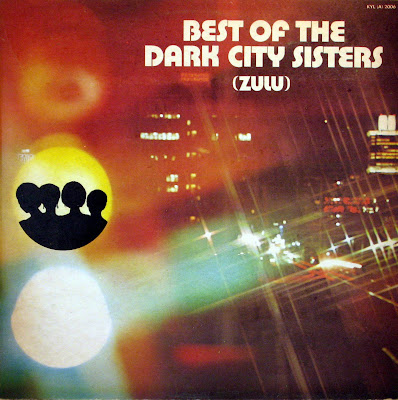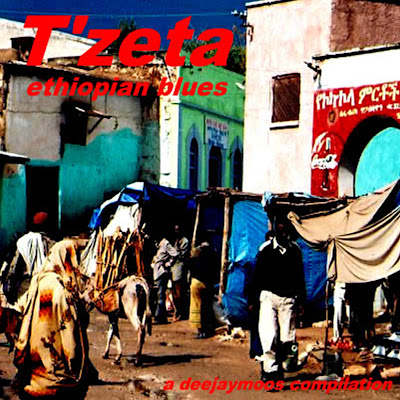-
Par DJDemonAngel le 22 Mars 2010 à 12:45
 Note :
Note : 




http://www.vieuxfarkatoure.com
Sortie : 2007
Style : World Mali
Tracklist :
01 - Fafa
02 - Aï Haïra
03 - Souba Souba
04 - Sarama
05 - Walé
06 - Slow Jam
07 - Mali
08 - Diaraby Magni
09 - Chérie Lé
10 - Paradise
11 - Fafa (Reprise)

Enregistré au célèbre studio Bogolan à Bamako, le son de Vieux Farka Touré est d'une qualité et d'une maturité impressionnantes pour un premier album. Deux titres réunissent pour la première fois Vieux et Ali Farka Touré, qui signe ici son dernier enregistrement. On ne peut s'empêcher de penser à un passage de flambeau, même si Vieux sait se démarquer de son père par un style résolument moderne, avec des pointes de rock ("Courage") ou de reggae ("Ana").
On retrouve quelques grands noms de la musique malienne : Toumani Diabaté, son père spirituel, à la kora, Bassekou Kouyaté au ngoni, Seckou Touré ou encore Hassy Sarré. 10% des profits contribueront à lutter contre la malaria qui sévit dans la région de Niafunké, la terre des Farka Touré. N'hésitez pas...
per Fabien Maisonneuve
permalink
 votre commentaire
votre commentaire
-
Par DJDemonAngel le 9 Mars 2010 à 11:00
 Note :
Note : 



Sortie : 1976
Style : World , Psychedelic
Tracklist :
1. Maha-Samana
2. Sannyasin
3. Yamabushi
4. Sannyasin Two
5. Bhikkhu
6. Sannyasin Three
7. Tri-Dandin
8. Chakka

Dhammapada is a John Mayer work that was commissioned by EMI in 1976 but remained unreleased for 30 years. His work with Joe Harriott on Indo-Jazz Suite and Indo-Jazz Fusions is justifiably lauded, but Dhammapada expands on his East-West fusion by adding instrumentation not just from India (sitar, sarod, tabla) but also from Japan and China (koto and cheng, respectively) to his British jazz combo (sax/clarinet, trumpet, flute, piano, bass). In addition to drums and tabla, he utilizes a trio of percussionists who play everything from glockenspiel to marimba to temple bells. He also makes use of Japanese and Chinese scales in addition to his Indian classical influences. The results are amazing. The seemingly odd instrumentation works surprisingly well together as an ensemble, and Mayer's enormous talents as both composer and arranger really come to the fore. The longer pieces play like suites within a suite, with thoroughly composed sections seamlessly giving way to jazzy improvisational solos and musical conversations (for example, the trumpet/sitar dialogue on "Maha-Samana") before the introduction of new themes. Mayer's use of polyrhythms and counterpoint is fantastic and the band's ability to transition from chamber ensemble precision to jazz-rock vamping is incredible. There are no lengthy solos to speak of; the playing is concise and extremely focused but everyone gets a turn. The longer pieces are separated from each other by progressively more elaborate arrangements of the same theme inspired by "Rag Kafi," "Sannyasin." Starting with just glockenspiel and crotales (basically bells), sax is added, then galloping bass and percussion. These pieces keep the album tied together nicely thematically, and also highlight Mayer's arranging skills. The recording itself is also excellent -- crisp and clear, taking full advantage of the stereo spectrum so each instrument is clearly identifiable with no muddiness in the mix (no easy task with a 13-piece ensemble). That this album sat unreleased for 30 years is almost a crime. It's a brilliant, groundbreaking work that sounds fresh even after languishing for three decades. It's a shame that Mayer didn't live to see the eventual release of Dhammapada. It could well be his finest achievement.
~ Sean Westergaard
permalink votre commentaire
votre commentaire
-
Par DJDemonAngel le 8 Mars 2010 à 11:15
 Note :
Note : 




Sortie : 1976
Style : World music , South Africa
Tracklist :
1 Tamatie yoyo no. 3
2 Langa more
3 Emarabini
4 Sekusile
5 Insizwa
6 Amangwane
7 Jimmy
8 Isinkwa no fishi
9 Sihamba kancane
10 Izinto ezinhle
11 Umtshi tshimbo
12 Umlando
13 Soze ndende
14 Lomfazi uyangihlupha
15 Izintombi zika Mogatusi
16 Amahlokohloko
17 Bayangi zonda
18 Rosie

thanks http://globalgroovers.blogspot.com
The Dark City Sisters were a group of session singers who came together to record an album and in the process popularized an innovative new style of singing. Rather than singing a common four-part harmony, the Sisters used five parts, which created a richer tone. Sometimes known as "vocal jive," this technique was subsumed under the umbrella term "mbaqanga," meaning, literally, dumpling, and figuratively, a homegrown style.
~ Leon Jackson
permalink votre commentaire
votre commentaire
-
Par DJDemonAngel le 5 Mars 2010 à 13:40
 Note :
Note : 

 ++
++
Style : World , Music Ethiopia
Tracklist :
1 Bezawork Asfew - T'zeta
2 Mahmoud Ahmed - Tezeta
3 Mulatu Astatqe - Tezeta
4 Sèyfou Yohannès - Tezeta
5 Menelik Wèsnatchèw - Tezeta
6 Either/Orchestra - Soul Tezeta
7 Tèsfa-Maryam Kidané - Tezeta
8 Mahmoud Ahmed - Tezeta, long version
9 Gétatchèw Kassa - Tezeta, slow
10 Gétatchèw Kassa - Tezeta, fast

Do you know that 1989 BBC double CD, 'Under African Skies'? When it first came to my ears I was blown away by one song specially. It is the last track on the album but it made an incredible impression. The voice of Bezawork Asfew is the most extraordinary, first time I heard it, it sent shivers down my spine, spontaneous goosebumps, tears, words can't express how that felt, ever since I've been looking around to find her music. All paths seem to lead to the CD this track comes from. If anyone can help us to find something, anything she made, that would be super. With the help of the great series on Buda Musique, 'éthiopiques', I made a compilation of different versions of 'T'zeta' or 'Tezeta', a traditional that practically all Ethiopian musicians seem to have played, listen. After receiving all your tips, it seemed appropriate to post this fantastic Youtube movie, thank you very very much for enlightening me !!!
permalink
Thanks : http://globalgroovers.blogspot.com votre commentaire
votre commentaire
-
Par DJDemonAngel le 3 Mars 2010 à 13:00
 Note :
Note : 



http://www.myspace.com/terakaft
Sortie : 2008
Style : World , Touareg Music , Blues
Tracklist :
1. Akh issudar
2. Ténéré wer tat zinchegh
3. Djer aman
4. Intidgagen
5. Soubhanallah
6. Legh assistane dagh aïtma
7. Amidinine wa dagh nohar timtar
8. Ewor imdane
9. Haran bardan
10. Amdagh
11. Iswegh atay
12. Arghane manine
13. Islegh teghram
14. Tahra a issasnane

Découvrez la playlist TERAKAFT Akh issudar (2008)Deuxième album de Terakaft enregistré en France et réalisé par Jean-Paul Romann (Lo'Jo) ce qui donne des chansons nettement plus travaillées et arrangées que le précédent "Bismilla". Le groupe évolue en trio (Kedou, Diara et Sanou), les trois se partageant le chant. On y retrouve quelques grands classisques de Tinariwen ("Ténéré wer tat zinchegh" et "Iswegh atay" de Intiyeden, "Aghrane manine" de Diara, "Islegh teghram" d'Abraybone...), ainsi que quelques nouvelles chansons ("Akh issudar" et "Amdagh" de Kedou, "Amidinine wa dagh nohar timtar" de Sanou).
permalink
 votre commentaire
votre commentaire Suivre le flux RSS des articles de cette rubrique
Suivre le flux RSS des articles de cette rubrique Suivre le flux RSS des commentaires de cette rubrique
Suivre le flux RSS des commentaires de cette rubrique





